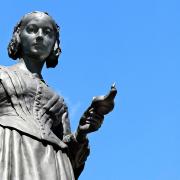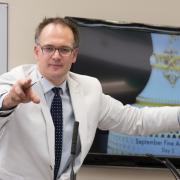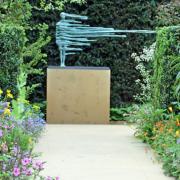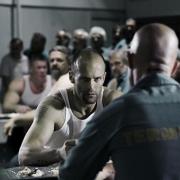Did E. Nesbit's visit to New Mills inspire her greatest novel?
A few months ago an event was held in New Mills to mark the 150th anniversary of the birth of Edith Nesbit, the celebrated author of The Railway Children. It was introduced by the chair of the Nesbit Society, Margaret McCarthy, and included a presentation by New Mills' former librarian, Gwenda Culkin.Given that Edith lived throughout her life in various houses in London and Kent, where she mixed with fellow Fabian Society members, such as HG Wells, George Bernard Shaw and Sydney and Beatrice Webb, it may seem surprising that a town in the High Peak should be chosen as a location for this special occasion. However, recent research has shown that New Mills was not only visited by the author, but could even have been the inspiration for her greatest book.The story of Edith Nesbit's Peak District connections began to unfold in 1999, when Gwenda Culkin and her library assistant, Barbara Matthews, were surprised to find that the library's microfilm reader had been booked for several days by a lady with a London telephone number. The researcher materialised as Laura Probert, the archivist of the Nesbit Society, who was one of five members of the society who had travelled to various parts of the country to investigate locations that might have been used as the setting for The Railway Children.Laura had been drawn to New Mills because she had learned from two biographies of Edith Nesbit that the author had paid visits to her stepsister, Saretta Deakin, who lived in the area with her husband, John Deakin. During her research at the library, Laura discovered that the Deakins lived at Mellor, a scattered hamlet in the hills above New Mills, where there is a house called Three Chimneys, which is the very name used in The Railway Children for the cottage that was home to three children and their mother during their father's wrongful imprisonment.Although foliage obscures the view from Three Chimneys today, it would have been possible at the time of Edith's visit to see a panorama that closely resembles that described in the book: 'It was hilly country. Down below they could see the line of the railway, and the black yawning mouth of the tunnel. The station was out of sight. There was a great bridge with tall arches running across one end of the valley.'Laura also established that Edith visited nearby Aspenshaw Hall, where members of the Woodcock family were 'dazzled, amazed and amused by their visitor, who would stretch out with the dogs on the hearthrug; her hair was cut short and her uncorseted figure was clothed in a flowing wool gown'. According to biographer Julia Briggs, 'provincial Derbyshire had never seen anyone so unconventional, so advanced.' Librarian Gwenda Culkin regarded Laura Probert's visit to New Mills as a 'freak coincidence of timing', because she and Barbara had just been asked to contribute to Derbyshire's Millennium Literary Festival by promoting a local author or a book set locally. The two librarians determined that they would follow up Laura's research and make the 'Nesbit Connection' the theme of their contribution.A search through electoral forms in the Record Office at Matlock revealed that the Deakins had never resided at Three Chimneys at all, but had lived in a house called Paradise. Almost immediately after making this disappointing discovery, the librarians were relieved to find that Three Chimneys is located next door to Paradise and so would have been well known to Edith during her visits.Gwenda and Barbara then set out to read as many Nesbit publications as possible in order to see if the New Mills area had acted as a source of inspiration in any of her other works. They were thrilled to discover that a short story written for the Weekly Dispatch is set in the fictitious town of Old Mills, 'where great mills and factories stare one in the face at every turn'. Another short story called From the Dead actually names Mellor and Marple, both of which are located within a few miles of New Mills, and Apinshaw, clearly a corruption or misspelling of Aspenshaw. Gwenda travelled to the British Library to access one of only two copies of Prophet's Mantle, a book Edith wrote jointly with her husband, Hubert Bland, and discovered that it contains references to Aspinshaw (yet another misspelling), Thornsett Edge, which is close to New Mills, and Firth Vale, which could be a corruption of the name of a local hamlet known as Birch Vale.The two librarians now felt that they had enough material to launch an exhibition and to lead 'Nesbit Trails' around the New Mills area. Jenny Agutter, who played Roberta in the 1970 film of The Railway Children and the mother in the Carlton TV version, even paid a visit to New Mills and walked up to Three Chimneys.The Keighley and Worth Valley Railway in Yorkshire had been used as a location for the movie, which greatly boosted their visitor numbers. When members of the railway found out about the claims being made in the High Peak, they were not at all pleased and insisted that 'the Railway Children belong to us'. The Keighley News belittled New Mills by calling it 'a little unknown Derbyshire town' and the Manchester Evening News spoke of a literary war raging across the Pennines. Even though the two librarians knew that there is no record of Edith Nesbit ever visiting the Keighley area, they refused to enter into an unseemly debate with the disgruntled people of Yorkshire and simply carried on with their research, which has produced further significant findings.One of the most memorable moments in the book involves Roberta waving her red-flannel petticoat to bring a train to a halt before it runs headlong into a landslide. New Mills historian Derek Brumhead was able to tell Gwenda and Barbara that a landslip had occurred in the nearby village of Buxworth, where a newly constructed railway viaduct had been swept away. Although this had taken place in the years before Edith's visit to Mellor, it had been well publicised in the area and would still have been talked about at that time. There is also an incident in the novel where a boy from a canal boat throws coal at the children. The Peak Forest Canal runs through the countryside where Edith stayed and at the time of Edith's visits there was a coal store at Strines Station, which is close to Three Chimneys.Another intriguing piece of evidence came to light when a railway enthusiast came into the library one day and declared that he had found the inspiration for the character of the 'Old Gentleman', who gave the children food when their mother was ill. He named him as Edward Ross, who lived in Marple and was the secretary of the Sheffield and Lincolnshire Railway. This well-known figure was highly respected by local people and he often gave coal and food to the needy at Christmas.Gwenda has taken up a new post in Nottinghamshire and Barbara has now retired from the library service, but the two indefatigable researchers have given over 30 talks to interested groups and societies since they began delving into the Nesbit connection in the millennium year and Barbara has just written up all their findings in a new booklet published by the New Mills Local History Society.Gwenda and Barbara are well aware that various rail locations in Kent have claims to be the inspiration for the The Railway Children. They accept that the seeds of the story may have been planted in Edith Nesbit's mind when she lived in that county, but they believe that they are on the right track in suggesting that most of the places mentioned in the novel are actually based on locations in and around New Mills.


























